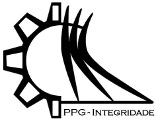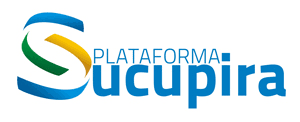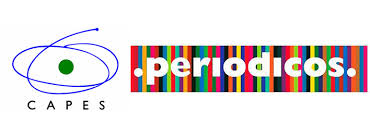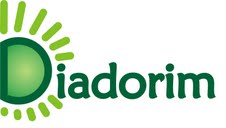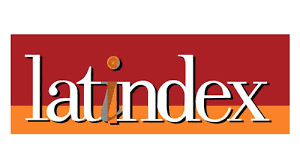UM ESTUDO COMPARATIVO ANALÍTICO-NUMÉRICO DO COMPORTAMENTO À FLEXÃO DE LAJES TIPO BUBBLEDECK
DOI:
https://doi.org/10.26512/ripe.v2i24.21023Abstract
A laje tipo BubbleDeck é um sistema construtivo, proposto pelo engenheiro dinamarquês Jorgen Breuning, que se utiliza do princípio em que no interior das lajes surge uma zona onde o concreto pode ser desprezado, por ter função estrutural limitada. Nesta zona são adicionadas esferas (“bubbles”) plásticas vazias, adequadamente espaçadas, propiciando uma redução considerável do consumo de concreto, o que pode gerar uma diminuição em torno de 35% do peso próprio da laje. Essas lajes se comportam como lajes maciças homogêneas e são largamente aceitas e utilizadas em diversas partes do mundo, tais como, na Europa, Américas, Ásia, etc. No entanto, esse sistema de laje ainda gera muitas dúvidas quando do seu real comportamento e dimensionamento, principalmente pela complexidade do problema e das dificuldades em se calcular os esforços internos. Portanto, este trabalho se insere dentro de uma perspectiva de criação de processos de análise que permitam uma melhor compreensão do problema. Assim, foram implementadas em MATLAB a Teoria de Placas Finas, conhecida como hipóteses de Kirchhoff, definidas pelas hipóteses de Kirchhoff-Love para obtenção dos esforços internos. Para tanto, foi determinada a rigidez equivalente entre lajes bidirecionais tipo BubbleDeck e lajes sólidas.
References
Associação Brasileira de Normas Técnicas. NBR 6118 ”“ Projeto de estruturas de concreto - Procedimentos. Rio de Janeiro, Brasil, 2014, 238 p.
Ali, Wondwosen Belay. Two Dimensional Micromechanics Based Computational Model for Spherically Voided Biaxial Slabs (SVBS). Mason Archival Repository Service Norwegian University of Science and Technology, 2014, 177p.
Araujo, J.M. A rigidez equivalente das lajes nervuradas de concreto armado. Revista: Teoria e Prática na Engenharia Civil, n.8, p.1-9. 2006.
BubbleDeck-UK (2008). BubbleDeck structure solutions ”“ Product Introduction. Part 1, BubbleDeck UK Ltd.
BubbleDeck-UK (2008). Design Guide for compliance with BCA using AS3600 and EC2, BubbleDeck UK Ltd.
BubbleDeck Brasil, disponível em <http://www.bubbledeck.com.br>, Acesso em: 17 de maio de 2016.
Blaauwendraad, J. (2010). Plates and FEM ”“ Surprises and Pitfalls. Springer ISBN 978- 90-481-3595-0.
Cobiax, disponível em http://www.cobiax.com/startseite, Acesso em 21 de maio de 2016.
Daliform Groups, disponível em < http://www.daliform.com>, Acesso em 21 de maio de 2016.
Franca, A. B. M; Fusco, P. B. As lajes nervuradas na moderna construção de edifícios. São Paulo: AFALA& ABRAPEX, 1997.
Marais, C. C., Robberts, M. J., and Rensburg, B. W. (2010). “Spherical void formers in concrete slabs.” Journal of the South African Institution of Civil Engineering, 52 (2), 2-11.
Mindlin, R.D. (1951). Influence of rotary inertia and shear on flexural motions isotropic, elastic plates. ASME Journal of Applied Mechanic. 18:31-38.
Moraes Neto, B.N. Comportamento à Punção de Lajes Lisas em Concreto Reforçado com Fibras de Aço sob Carregamento Simétrico. Tese de Doutorado em Estruturas e Construção Civil,. Departamento de Engenharia Civil e Ambiental, Universidade de Brasília, Brasília, DF, Brasil, 2013, 349 p.
Santos, L.M. Cálculo de concreto armado. 2v. São Paulo, LMS, 1983 (v.1), 1981.
Timoshenko, S. P; Woinowsky-Krieger, S. Theory of Plates and Shells. McGraw-Hill, 1959.
Ugural C. A., e Fenster K. S. (2003). Advanced Strength and Applied Elasticity. 4th Edition. Pearson Education, Inc ISBN-10: 0130473928.
Downloads
Published
Issue
Section
License
Given the public access policy of the journal, the use of the published texts is free, with the obligation of recognizing the original authorship and the first publication in this journal. The authors of the published contributions are entirely and exclusively responsible for their contents.
1. The authors authorize the publication of the article in this journal.
2. The authors guarantee that the contribution is original, and take full responsibility for its content in case of impugnation by third parties.
3. The authors guarantee that the contribution is not under evaluation in another journal.
4. The authors keep the copyright and convey to the journal the right of first publication, the work being licensed under a Creative Commons Attribution License-BY.
5. The authors are allowed and stimulated to publicize and distribute their work on-line after the publication in the journal.
6. The authors of the approved works authorize the journal to distribute their content, after publication, for reproduction in content indexes, virtual libraries and similars.
7. The editors reserve the right to make adjustments to the text and to adequate the article to the editorial rules of the journal.


